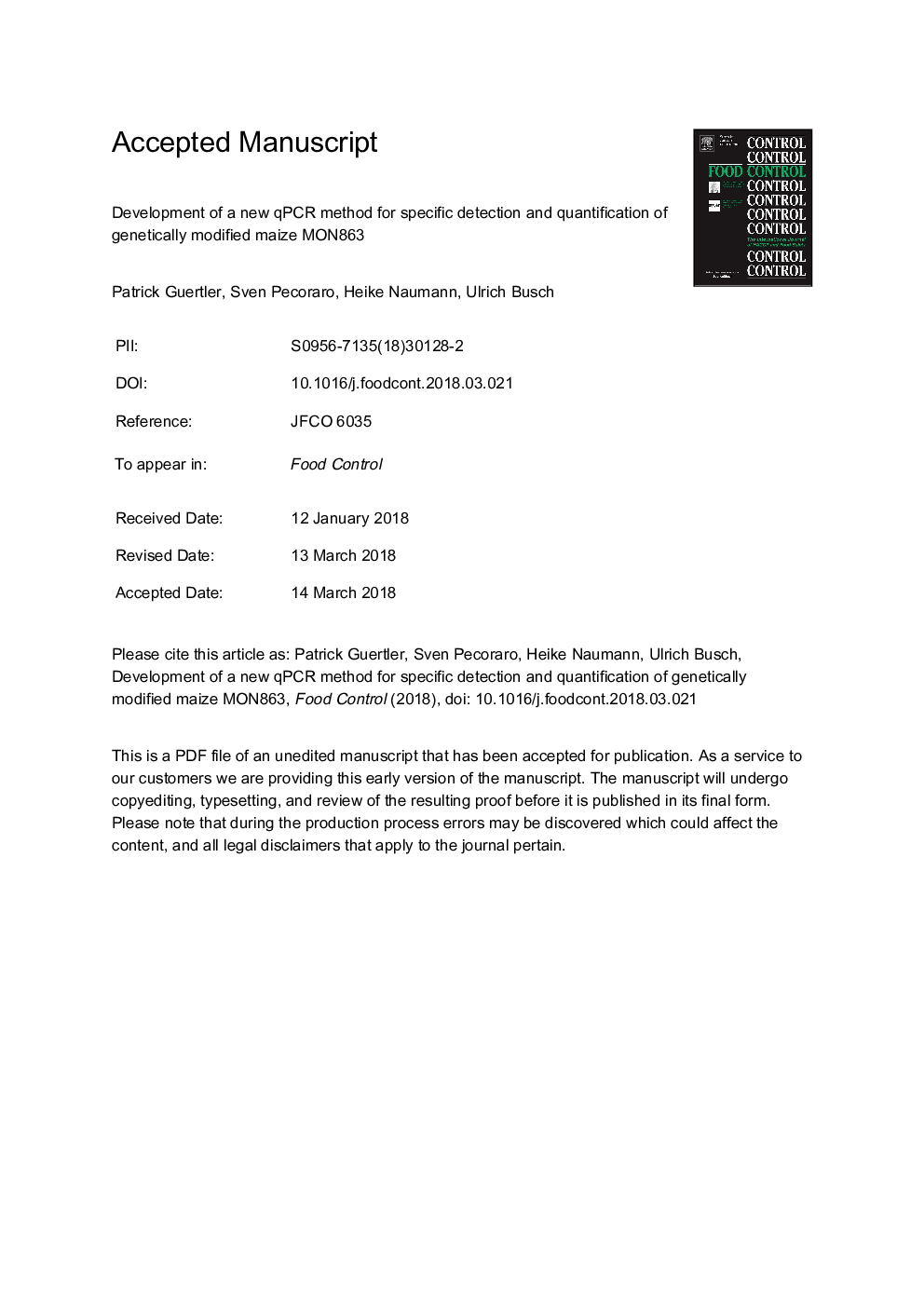| Article ID | Journal | Published Year | Pages | File Type |
|---|---|---|---|---|
| 8888049 | Food Control | 2018 | 18 Pages |
Abstract
Analysis of non-transgenic seed samples for the presence of genetically modified maize MON863 revealed unexpected amplification signals using an official qPCR method. These amplification signals only occured when using other master mix products as in the original validation process. DNA sequence data from an unspecific amplicon could be mapped to mitochondrial maize DNA reference sequence. Oligo sequence analysis revealed that forward primer and probe both can hybridize to the mitochondrial maize DNA leading to unspecific amplification signals in qPCR. Therefore, we designed and validated a new qPCR method for event MON863 with a LOD of 5 copies per reaction. The method shows high specificity as no unspecific amplification signal was detected after analysis of reference material for different genetically modified crops and conventional maize samples. Robustness tests were performed in two different laboratories and no effects on method performance could be observed when using different master mixes and qPCR devices, as well as with variation in oligonucleotide concentrations.
Related Topics
Life Sciences
Agricultural and Biological Sciences
Food Science
Authors
Patrick Guertler, Sven Pecoraro, Heike Naumann, Ulrich Busch,
